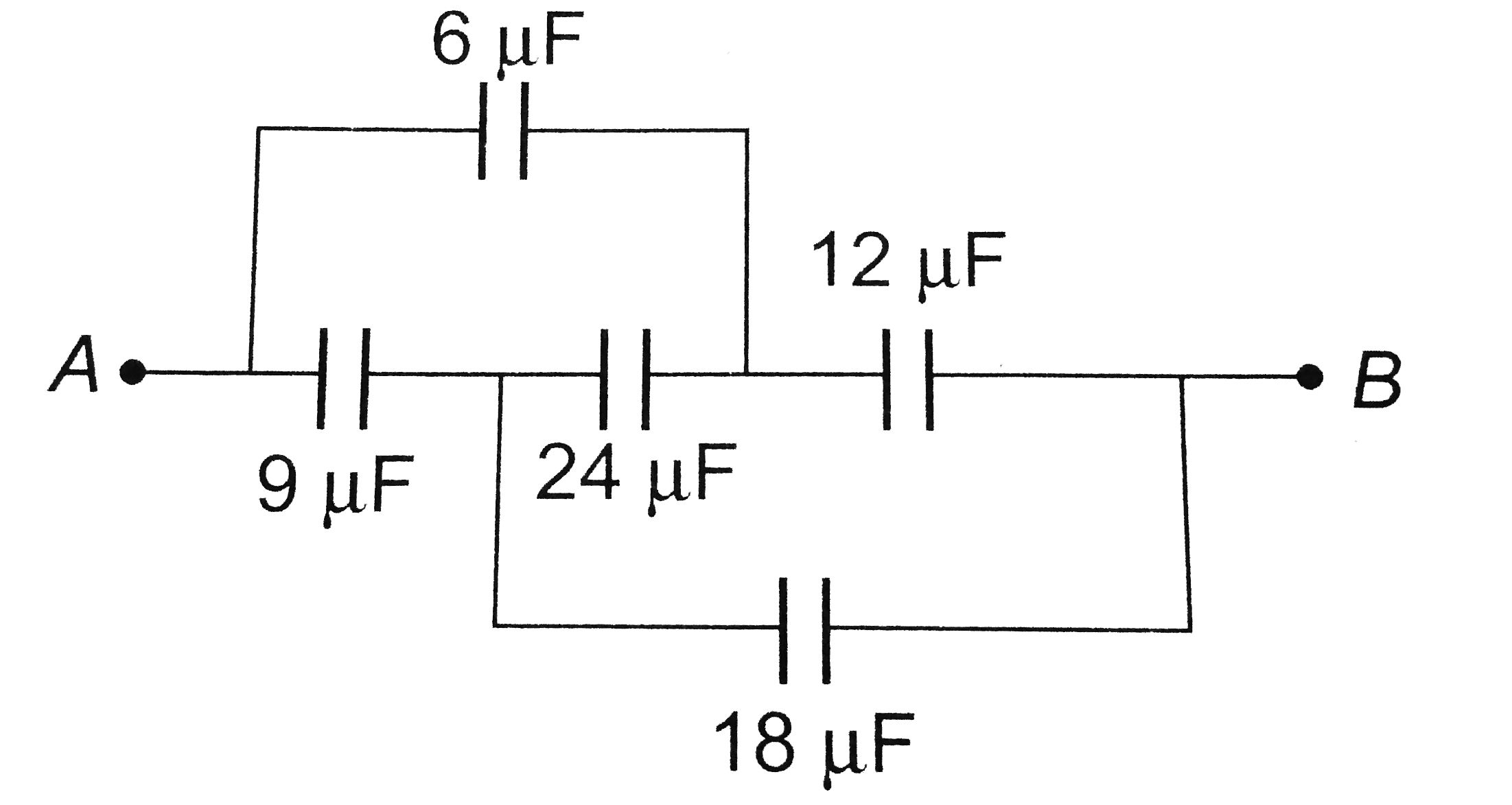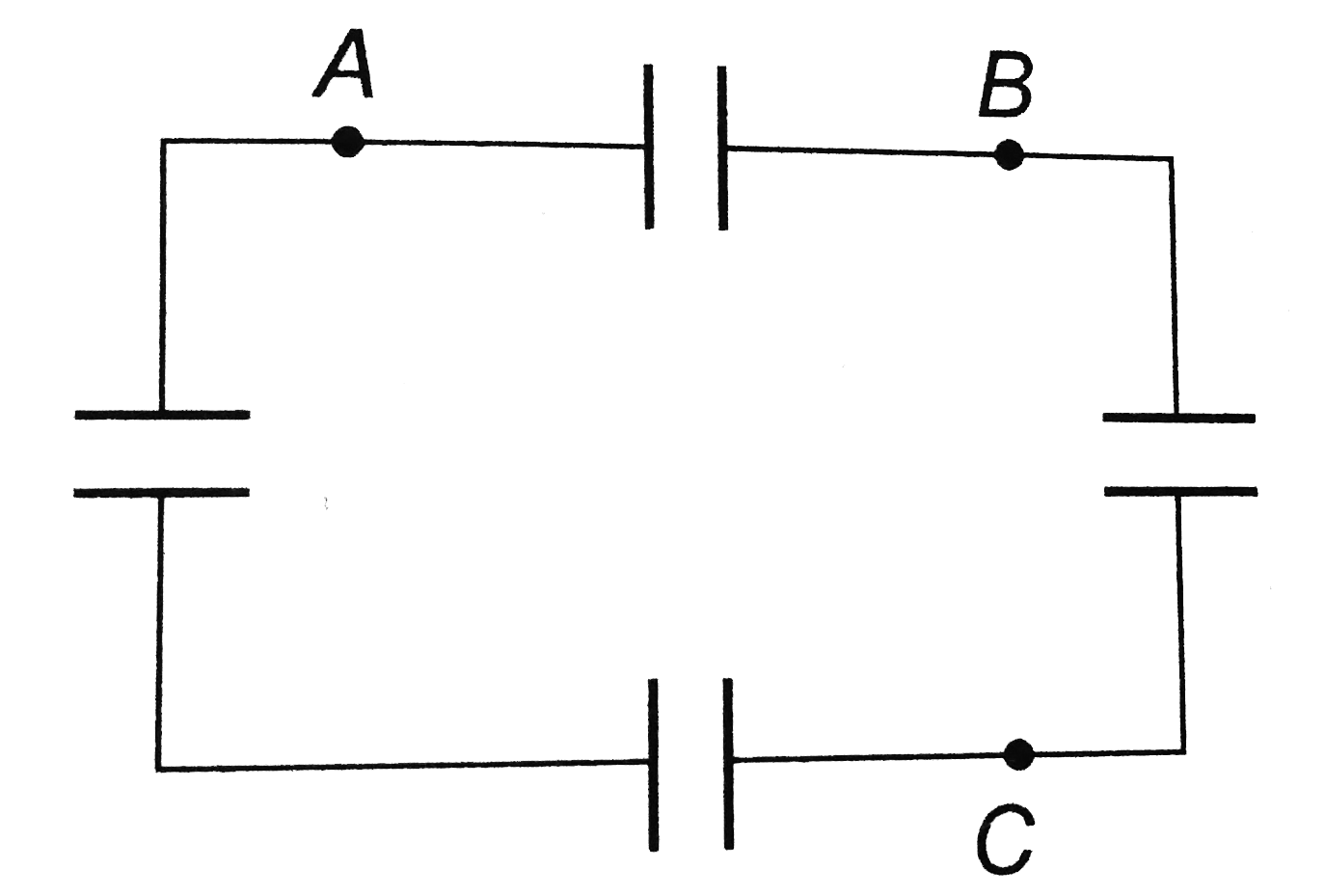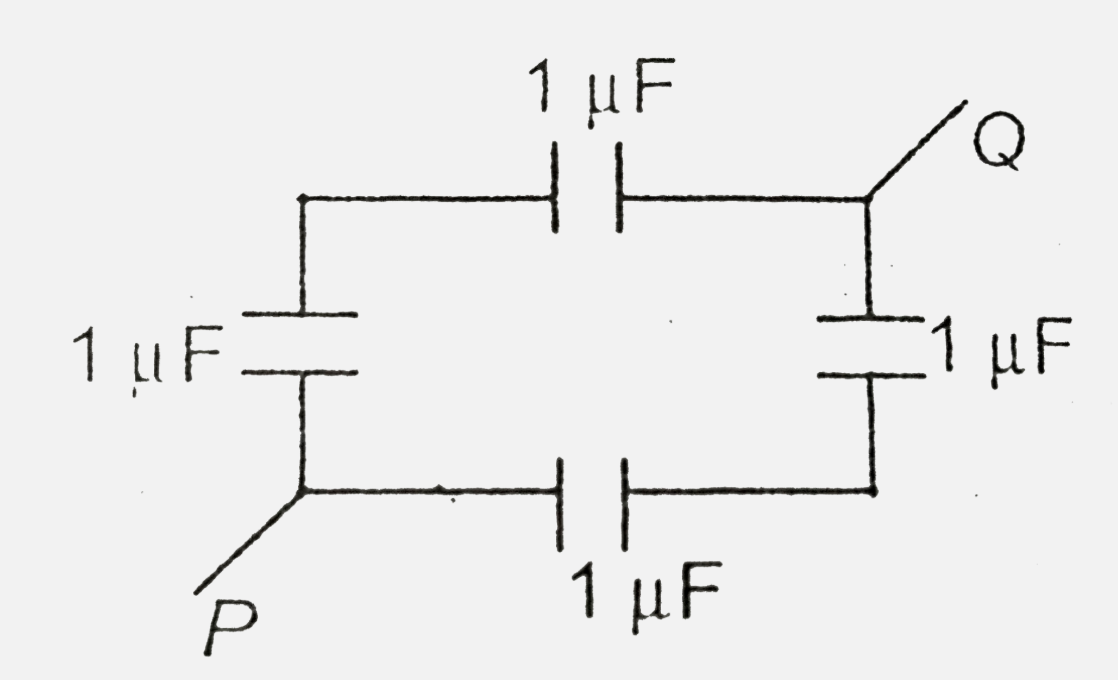In the circuit diagram shown in the adjoining figure, the resultant capacitance between P and Q is

A
47μF
B
3μF
C
60μF
D
10μF
Video Solution
Text Solution
The correct Answer is:B
The given circuit can be draws as

where C=(3+2)μF=5μF
1CPQ=15+120+112=2060=13
⇒CpQ=3μF
|
Topper's Solved these Questions
- ELECTRIC POTENTIAL & CAPACITANCEBook:A2ZChapter:ELECTRIC POTENTIAL & CAPACITANCEExercise:Problems Based On Mixed Concepts
Explore 44 Videos
- ELECTRIC POTENTIAL & CAPACITANCEBook:A2ZChapter:ELECTRIC POTENTIAL & CAPACITANCEExercise:Section B - Assertion Reasoning
Explore 17 Videos
- ELECTRIC POTENTIAL & CAPACITANCEBook:A2ZChapter:ELECTRIC POTENTIAL & CAPACITANCEExercise:Grouping Of Capacitors
Explore 48 Videos
- ELECTRIC CHARGE, FIELD & FLUXBook:A2ZChapter:ELECTRIC CHARGE, FIELD & FLUXExercise:Section D - Chapter End Test
Explore 29 Videos
- ELECTROMAGNETIC INDUCTIONBook:A2ZChapter:ELECTROMAGNETIC INDUCTIONExercise:Section D - Chapter End Test
Explore 30 Videos
Similar Questions
Knowledge Check
The equivalent capacitance between P and Q is.
 .A10μFB20μFC5μFD15μF
.A10μFB20μFC5μFD15μFIn the connection shown in the adjoining figure, the equivalent capacity between A and B will be
 A10.8μFB69μFC15μFD10μF
A10.8μFB69μFC15μFD10μFFive equal capacitors, each with capacitance (C) are connected as shown in the adjoining fig. Then the equivalent capacitance between A and B is -
 ACB5CCC/5D3C
ACB5CCC/5D3C
In the network of resistors shown in the adjoining figure, the equivalent resistance between A and B is

View SolutionFor the circuit, the equivalent capacitance between P and Q is

View SolutionFour capacitors of each of capacity 3μF are connected as shown in the adjoining figure. The ratio of equivalent capacitance between A and B and between A and C will be

View SolutionIn the circuit as shown in the figure the effective capacitance between A and B is

View SolutionIn the circuit as shown in the figure the effective capacitance between A and B is

View Solution


